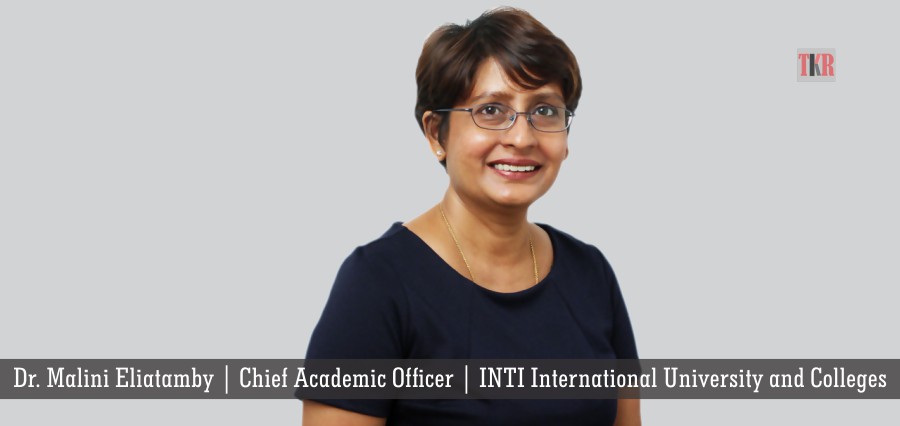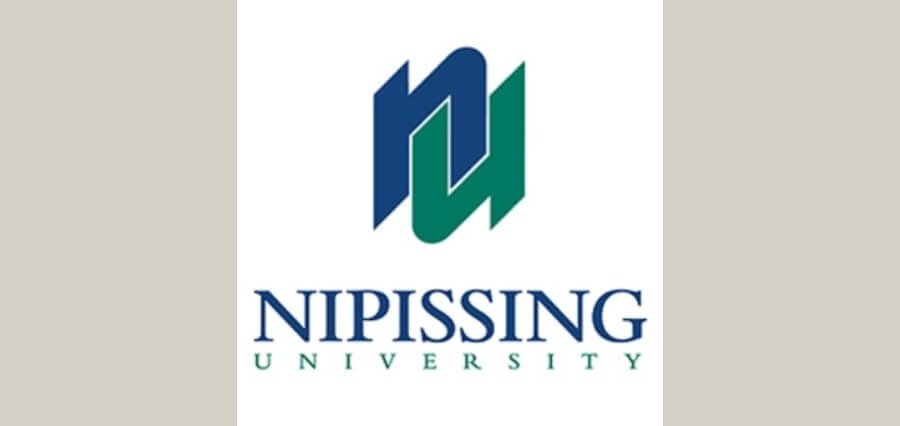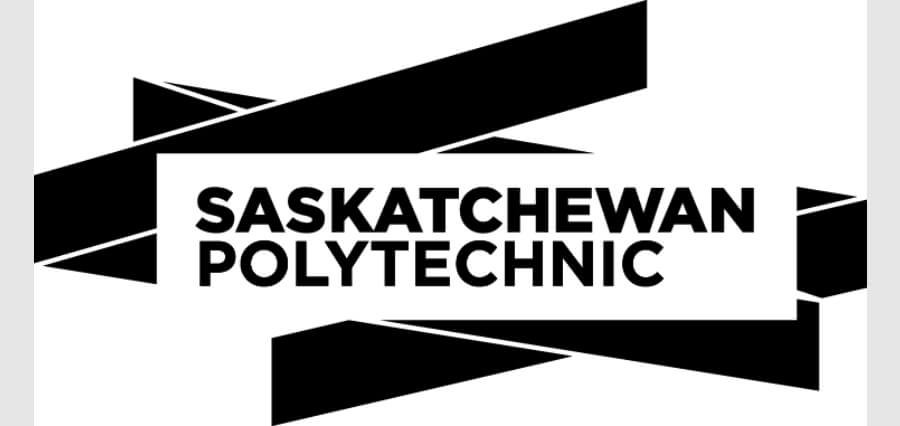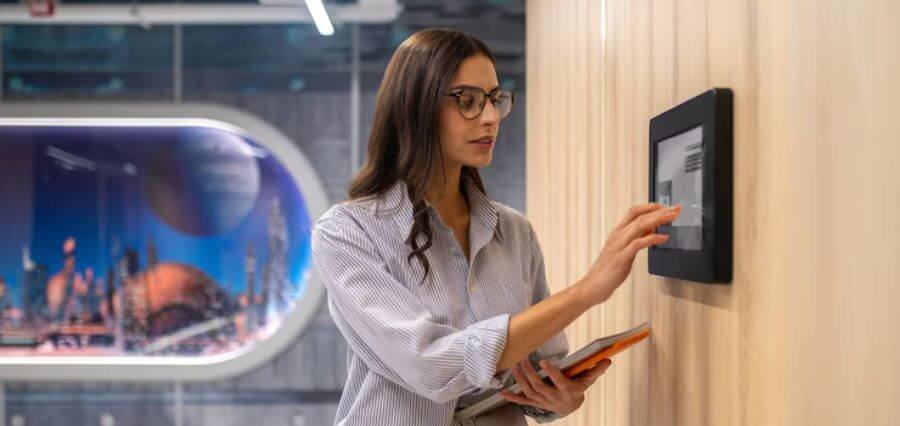As we look around us, there is no doubt that healthcare is changing at an unprecedented pace. It is also a known fact that technology is an empowering influence and facilitator of broad changes driving innovation in the medical profession and healthcare as a whole, similar to other industries.
As industries across the nation continue to transform in a digital sphere, healthcare is certainly no exception. With the rapid progression in wearable devices and a greater global reliance on big data, the role of the medical practitioner is changing dramatically. Recent technological innovations, such as smart medical devices, wearable devices, electronic health records, internet of things, electronic chips, big data and online patient portals, have been major players in the industry’s evolution toward virtualizing the overall patient experience. From the perspectives of our daily lives, there is a shift to being proactive in managing one’s health and a move to wellbeing and wellness in one’s mind set and practices. With every new discovery and coupled with the application of technology, the potential for innovation, delivery, patient engagement and practice of healthcare is being reinvented and reimagined. The newfound technological capabilities are limitless and certainly jaw dropping.
Let’s look at how technology is impacting the medical industry:
Immersive Technologies in Health education and Medical Education
Augmented reality is the integration of digital information with the user’s environment real time.
Some of the great technological inventions involving augmented reality have fundamentally changed the way patients are now diagnosed and treated; moreover, those advancements have significantly improved the way in which doctors are educated and trained. Current applications of augmented reality in medicine include their use in training and in educating the medical practitioners, diagnostic medicine, complex and invasive surgery, patient care and aftercare and in healthcare consulting.
Through robust 3D training tools medical practitioners learn about Anatomy without having to cut open a cadaver. Some of the most innovative projects using immersive technologies for medical education rely on Microsoft’s mixed reality device, HoloLens. In some universities, laboratories with cadavers and 2D illustrations in medical books are being replaced by HoloLens headsets. Using apps that have been created for this purpose, medical students can rotate and virtually dissect a body to see the structures, systems, and organs.
Artificial Intelligence
Artificial Intelligence (AI) is defined as the intelligence demonstrated by machines and software with the ability to depict or mimic the human brain functions. AI is already significantly changing healthcare. AI is evolving with time and is performing more efficiently, more quickly and at a lower cost. One of the biggest potential of AI is to help people stay healthy so that they have a better quality of life and stay healthy.
AI increases the ability of healthcare professionals to understand the needs and pattern of behaviour and treatment of their patients and provide adequate support. In the area of early detection, wearable technology coupled with AI allows early detection of diseases. This enables doctors to better monitor and potentially detect diseases at an early stage.
In the diagnosis area, IBM’s Watson for Health is already assisting healthcare organizations to apply cognitive technology to unlock vast amounts of health data and power diagnosis. Watson’s ability to store and review every medical journal, symptom, and case study of treatment and response around the world is far superior and faster than what the human brain is capable of.
Organs on a Chip
Researchers are now experimenting with new technologies that will help reduce the time and cost of medical trials that kill millions of animals every year. Today, there are researchers who have engineered microchips that recapitulate the microarchitecture and functions of living human organs, including the lung, intestine, kidney, skin, bone marrow and blood-brain barrier. Because the microdevices are translucent, they provide a window into the inner workings of human organs and can be used in clinical trials to develop new drugs and vaccines.
Internet of Things in Medical and Healthcare
Using the IoT combined with medicine (IoMT) hospitals are able to manage any number of devices, automate device to analytics data flow, remotely monitor a patient’s health statistics, manage hospital assets, remotely configure and tune devices, share applications among clinicians and physicians in providing patient care and also provide real time location services. A team from another unit is able to predict at what time they will be receiving data, samples or a patient to their unit. In addition to this, hospitals will also be able to monitor the environmental real time using IoT such as checking the temperatures of refrigerators, special rooms or temperature specific devices.
Another example closer to home is the FitBit or similar wearable technology. A person wears a FitBit to track his or her steps; that step count is tabulated on an iPhone via Bluetooth technology, and then that data can be shared with a doctor to provide feedback via Wi-Fi connection and automated reporting data. This is a powerful tool in proactive medicine and wellness. It also gives rise to other opportunities and businesses and platforms which allows these operators of the devices and healthcare system to integrate and build business opportunities.
Blockchain Technology
The power of blockchain is in terms of its ability to securely, privately and comprehensively track patient health records. Currently, a patient’s medical history is scattered across multiple providers and organizations. One piece is held by the general practitioner (GP). Several pieces are held by every specialist a person has visited throughout their life. Another set might be held by wearables or devices that track their health. Another set might be held by various pharmacist where a person purchases their medicines off the counter or through a pharmacists. Blockchain can assist in assembling all of these pieces in real-time and view the entire picture of a patient’s health. The best diagnosis can be done in this manner.
This technology has potential value for clinical trials, medical billing, pharmaceutical supply chain and patient records.
Telemedicine
Telemedicine services such as video-conferencing or Skype or Video Streaming are becoming cost effective ways to complement local health services. It is particularly beneficial to those living in rural, regional and remote communities such as in India and China, and requiring regular access to medical specialists who live several kms away. Teleconsultation is also beneficial to doctors in remote rural areas who need expert opinion and advice from specialist in a different area. It is also beneficial for a team of doctors or specialist from one hospital in one country who needs to consult with specialist in another country who has experience in that particular field.
Improved Communication
With the advent of modern technological innovations, medical professionals can now use media such as online discussion platforms and real-time meeting capacities to communicate and share best practices. Electronic medical records in-house are accessible by all relevant departments and care providers and can be shared across the web. Surgeries have also been done in this manner remotely.
Technology as Tool to Empower Patients
The world of big data has slowly begun to chip away the belief that the doctor is the sole diagnostician, and decision maker. Whether it’s through a wearable consumer device such as a Fitbit or the Health app that comes ready-installed on every iPhone, the average patient today is walking into the doctor’s office with the relevant knowledge, awareness and information which has been gained through the tools that monitor issues such as their heart rate, nutritional intake and sleep pattern, information from apps and internet before even speaking to the doctor.
The medical industry’s innovation into consumer-friendly products that are user friendly and inexpensive have paved the way for a readily available and greater pool of information and data. In most instances, these data are improving patient care, patient experience, enabling doctors to remotely monitor things such as their patients’ drug adherence. It is beginning a new revolution where patients are empowered.
Deep Learning and Machine Learning to Predict
Machine Learning and Deep Learning using neural networks is not confined to information technology or computer science. Today, IBM is doing research on how deep learning and machine learning could be used to explore new solutions for a range of health care challenges. By using deep learning strategy IBM hopes that they will enable hospitals to establish, prioritize, and target interventions to ensure that patients have access to the care they require outside an ER setting.
Healthcare in the Cloud
Similar to other industries, healthcare providers are discovering that cloud based systems can be more secure and more sophisticated than existing technologies which are onsite. This starts a movement whereby medical records are being digitised and stored in the cloud.
Big Data Analytics
Big data is poised to bring significant developments and innovation in enabling a preventive medicine approach and personalised treatment to patients. Big data is the terminology that is used to collect and store huge amounts of data from a variety of sources and the data is then processed and analysed. This is termed as analytics.
Data related to health is deep and diverse. The data gained from various sources have the potential to be explored to examine ways in which healthcare costs could be reduced, predict the onset of an epidemic, improve the quality of life, improve quality of health care and develop new and innovative drugs, procedures and treatment.
Today, computing has evolved to combine machine learning, coding and advanced analytics. Today, technologies such as predictive and prescriptive analytics are being used to model data to predict when and why patients will be hospitalised and what will be the expected therapy, response and recovery time. This will translate to better outcomes and optimise operations.
Robotics
Robotics have disrupted and changed the way medicine is practiced. It has been used in medicine for more than 40 years. They range from simple laboratory robots to surgical robots that can aid a surgeon during operations or conduct the operation themselves. Robots can manipulate small surgical instruments that cannot be handled by the human hand while nano robots have made non-invasive treatments possible. Robots have also been used in rehabilitation and physical therapy. Robots have also the potential to revolutionise the end of life care where it can be programmed coupled with AI to help people remain independent longer and reducing loneliness, the need for extra care.
3-D Printing
3D printing is performed by telling a computer to apply layer upon layer of a specific material moulding them one layer at a time until the final product is created. Medical technology is now harnessing this technology. 3-D printing has the potential to revolutionise the medical supply chain by changing the manufacture of pharmaceuticals, prostheses or implants.
Using 3-D printing, tiny organs with stem cells as the production material could be built and this could be the future where they will be able to grow inside the body of a sick patient and take over when an organic organ, such as a kidney or liver, fails. Researchers now have also been successful in producing a 3-D bioprinter prototype that can produce human skin. In pharmacology, a 3-D printed pill, unlike a traditionally manufactured capsule, can house multiple drugs at once, each with different release times. All these discoveries leveraging on technology produces endless possibilities.
Digital Medical Records
Previously, medical information from visits to the doctor or hospital were kept in files. Today, with the advancement of Information Technology, data can be stored digitally and kept using portals or health information systems. These data can then be retrieved electronically or mined for further analysis. Digitising medical billing systems also allow hospitals, clinics and medical practices to run much more smoothly. It also allows for integration into various other IT systems.
What does all this mean to us, humans?
There is no doubt that technology is revolutionising and disrupting healthcare. Perhaps the greatest impact is in AI where AI has the potential to consistently improve the access to reliable and accurate medical image analysis with the help of digital image processing and machine learning platforms. AI has the potential to cater for innovative and automated patient care and engagement solutions which eventually will reduce the cost of medical and healthcare services. 3-D printing has tremendous potential due to its ability to be customised. Bid data is poised to revolutionise healthcare and the insurance industry.
What does this all mean to medical and healthcare education and Industry 4.0?
The 4th Industrial Revolution or “Industry 4.0” describes a trend in integrating smart technologies and cyber-physical systems in the manufacturing process. In healthcare, Industry 4.0 has driven many innovations that aim to improve the quality and efficiency of medical practice and patient care. The big data revolution in health care is not only connecting machines and systems together, but also connecting people.
The future of medical education is about being connected. It is about the ability to harness and use various technologies such as video streaming, video conferencing, Skype, online discussions to better communicate and share ideas, best practices and consultations.
As the 4th revolution progresses, we will see more integration of smart systems into health care, possibly replacing humans in certain situations. Hence, the need for the medical students and healthcare related professions to be agile and nimble where technology is concerned. It is important for medical students to become fluent in the different cyber-physical systems that will be integrated into patient care. They need to develop their digital literacy.
It is also important for students pursuing medicine and other healthcare disciplines to be equipped with other skills such as coding, cloud computing, data analytics and the ability to understand machine learning. They should be savvy with the use of new technologies.
It is evident that technology is transforming healthcare and the medical profession and hence, some jobs of today will cease to exist in the future. There will be new jobs unheard of now, as you can already see in other industries. We may be seeing jobs that combine the skills of a medical practitioner and a computer scientist such as telesurgery planner, virtual surgery specialist, medical data analysts and many more that one can’t imagine today. This also gives rise to new disciplines in research and new programmes being developed in education institutions as they study trends and needs of the future.
About the Author
Dr. Malini Eliatamby is the Chief Academic Officer of INTI International University and Colleges, Malaysia. She is an accomplished practitioner in education technology, analytics for better student experience, curriculum design and development, strategy formulation, academic model formulation, online and blended learning. She has developed fully online programmes at the undergraduate as well as postgraduate level. She is also a change management expert. She was the recipient of the National Outstanding Educator Award Malaysia 2015 and the Blackboard Catalyst Award (in the category of Professional Development) 2017.









